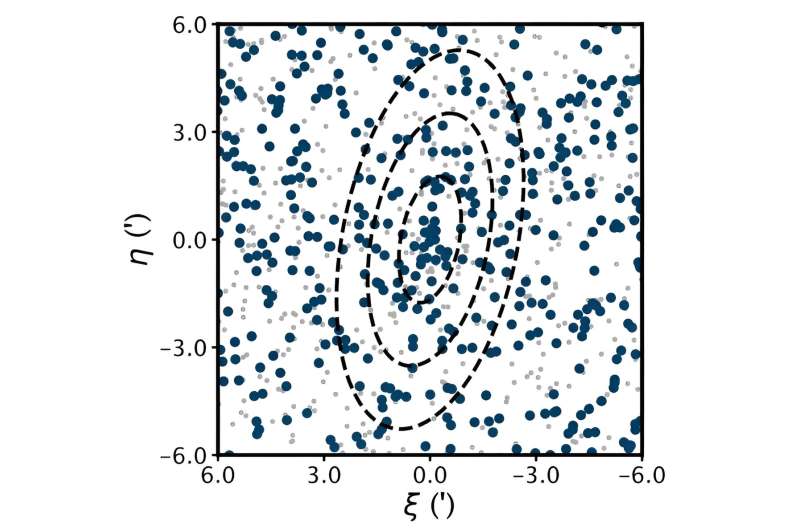November 27, 2023 report
This article has been reviewed according to Science X's editorial process and policies. Editors have highlighted the following attributes while ensuring the content's credibility:
fact-checked
preprint
trusted source
proofread
Astronomers discover the Milky Way's faintest satellite

By analyzing the images from the Ultraviolet Near Infrared Optical Northern Survey (UNIONS), an international team of astronomers has discovered a new compact satellite of the Milky Way, which received designation Ursa Major III/UNIONS 1. The newfound object turns out to be the least luminous known satellite of the Milky Way. The finding is reported in a paper published Nov. 16 on the pre-print server arXiv.
The Milky Way is known to be orbited by dozens of smaller, gravitationally-bound galaxies or star clusters. Although the list of identified satellites is relatively long, astronomers believe that some dwarf and faint galaxies are still undetected.
One of the astronomical surveys that is capable of finding such satellites is UNIONS, which observes the sky over 4,800 square degrees in the northern hemisphere. It is a collaboration between two Hawai'ian observatories: the Canada-France-Hawaii Telescope (CFHT) and the Panoramic Survey Telescope and Rapid Response System (Pan-STARRS). One of the survey's main goals is to investigate the assembly and structure of the Milky Way.
A team of astronomers led by Simon E. T. Smith of the University of Victoria in Canada, has investigated the data from UNIONS as part of the search for new galaxies in the Local Group. As a result, they found the Milky Way's satellite, not reported by previous studies.
"Ursa Major III/UNIONS 1 (UMa3/U1) was discovered during an ongoing search for faint Local Group systems in UNIONS," the researchers wrote.
The team initially identified Ursa Major III/UNIONS 1 as a spatially-resolved over-density of stars in the UNIONS data. Next, they obtained radial velocities from the Keck telescope and proper motions from ESA's Gaia satellite, which confirmed that it is a coherent system.
Ursa Major III/UNIONS 1 has a total absolute V-band magnitude of +2.2 mag, which makes it the faintest satellite of the Milky Way so far detected. The previous record holder was Kim 3—an ultra-faint star cluster with a total absolute V-band magnitude of +0.7 mag.
According to the paper, Ursa Major III/UNIONS 1 is very compact as it has a half-light radius of approximately 10 light years, and contains only about 50–60 stars. Its total mass is therefore also estimated to be very low—about 16 solar masses.
The results indicate that Ursa Major III/UNIONS 1 has a pericenter of 41,700 light years and passes through the disk of the Milky Way around 52,100 light years from the Galactic center. The data also suggest that Ursa Major III/UNIONS 1 is at least 11 billion years old and has a metal-poor stellar population.
When it comes to the origin and nature, Ursa Major III/UNIONS 1 may have been accreted into the Milky Way halo, and may be a dwarf galaxy or a star cluster. Hence, follow-up observations are required in order to disclose the true nature of this compact and faint satellite.
More information: Simon E. T. Smith et al, The discovery of the faintest known Milky Way satellite using UNIONS, arXiv (2023). DOI: 10.48550/arxiv.2311.10147
Journal information: arXiv
© 2023 Science X Network





















